Accountability in morphological borrowing: Analyzing a linguistic subsystem as a sociolinguistic variable.
Tara Sanchez
Principle of Accountability (PofA)
Analysts should record all occurrences of a variable rather than selecting those variants of a variable that tends to confirm their argument while ignoring others that do not.
*source
Thomason and Kaufman
Social factors can explain all structural borrowing
Principle of Accountability (PofA)
Intense contact → intense structural
But...
Cannot objectively measure contact intensity → lacks predictive force, shows that increasing levels of structural borrowing
Contact situation
- Location: Aruba and Curaçao
- Contacted languages: Papiamentu, Dutch, Spanish, English and CEC(Caribbean English Creole)
- Recipient language: Papiamentu
- Borrowings can come from four structurally distinct language varieties.
- Social circumstances are distinct and have drastic changes
The corpus
-
Real-time data
-
171 written texts
-
Assuming no major changes in an individual's grammar after age 20
-
The dependent variable
is whether or not a form
or function from the
verbal morphology of
Dutch, Spanish, or
English is borrowed
into Papiamentu. -
The list of possible
borrowings is given
in Table 2.

There are 191 possible borrowings: 21 from English, 22 from CEC, 38 from Dutch, and 110 from Spanish.
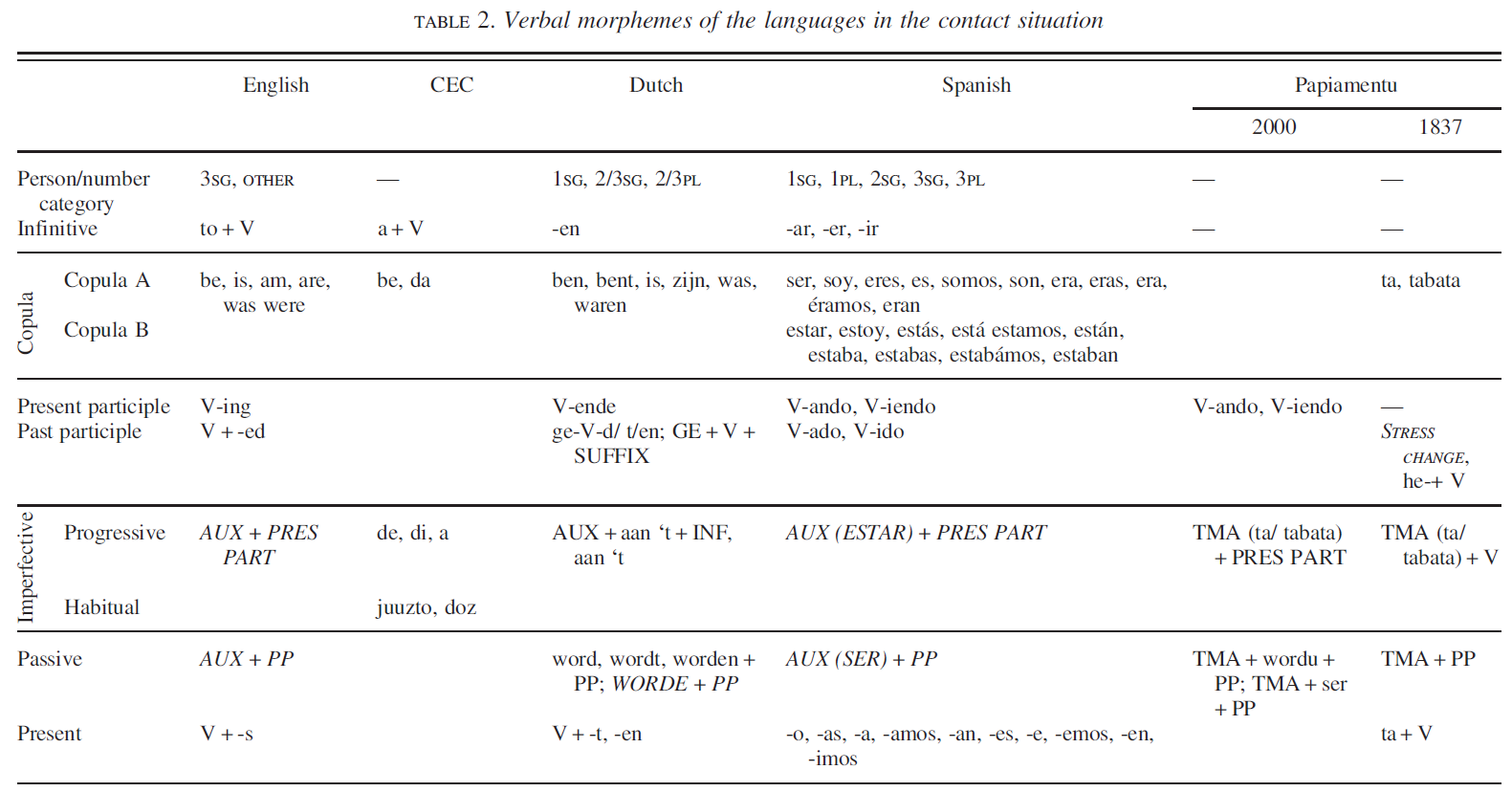
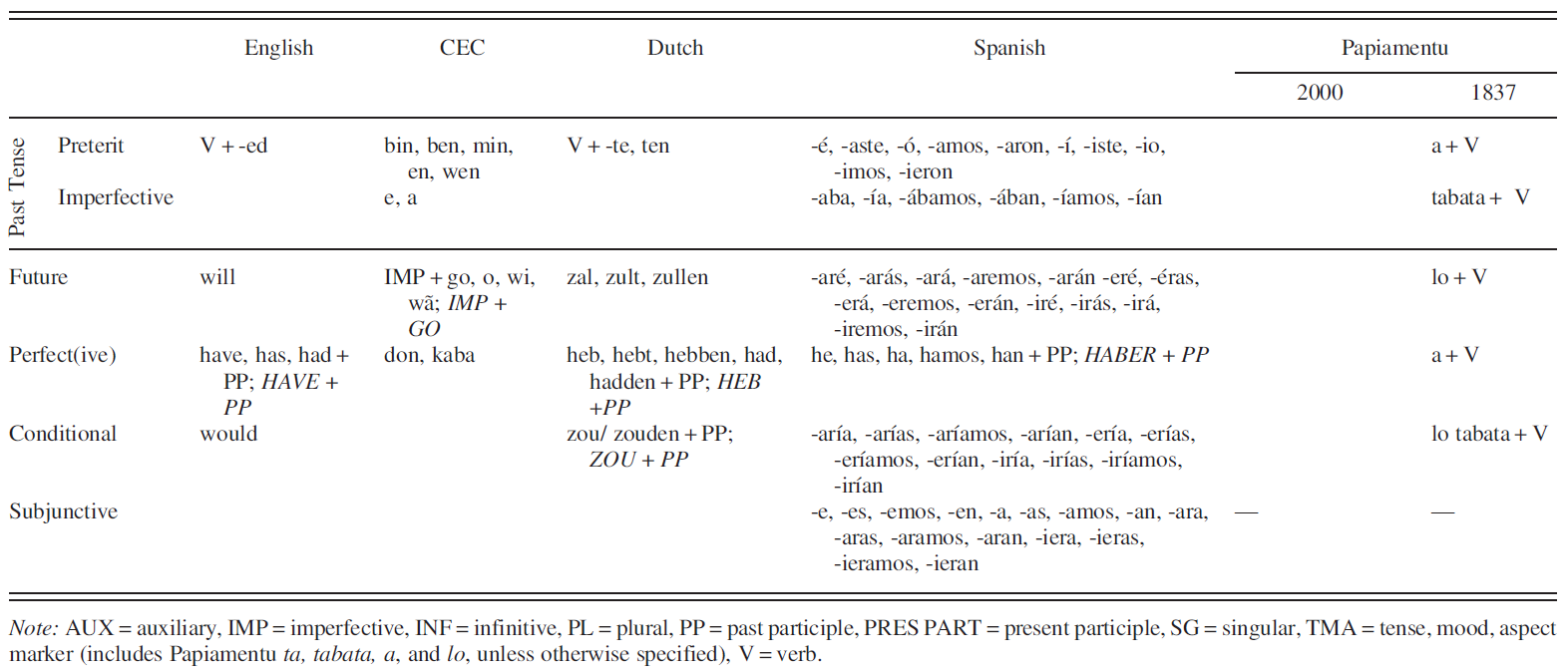
Social/demographic variables



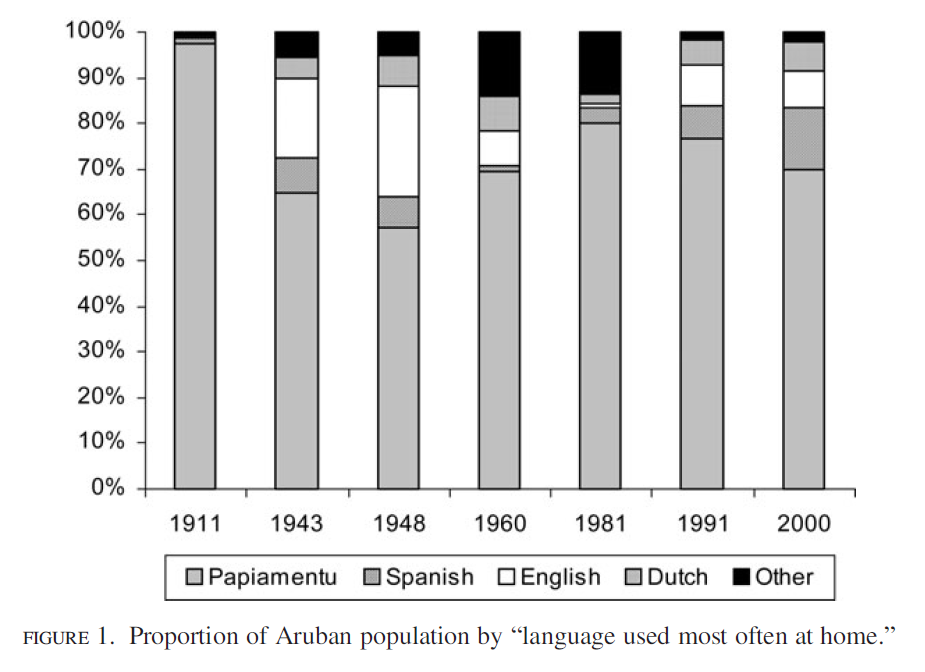
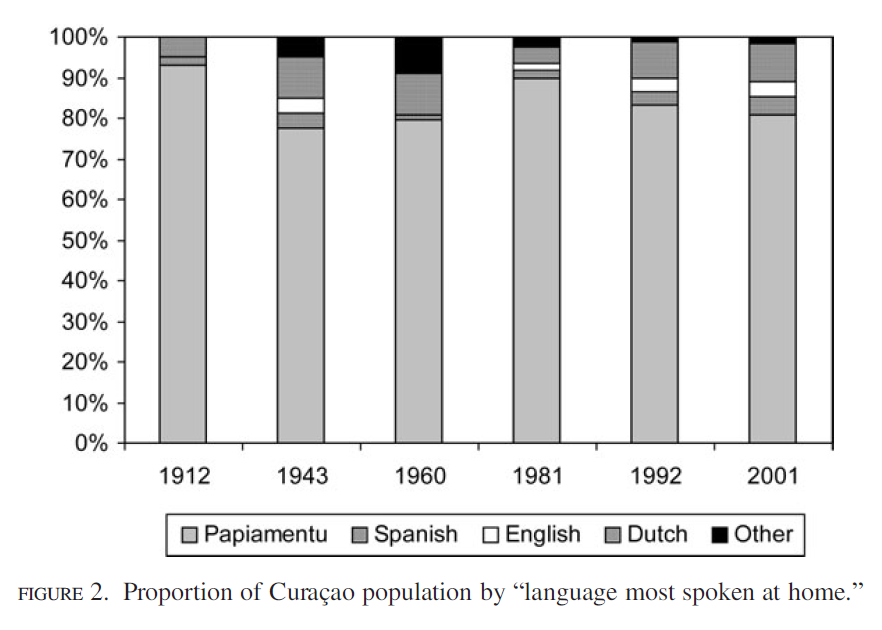
Linguistic variables

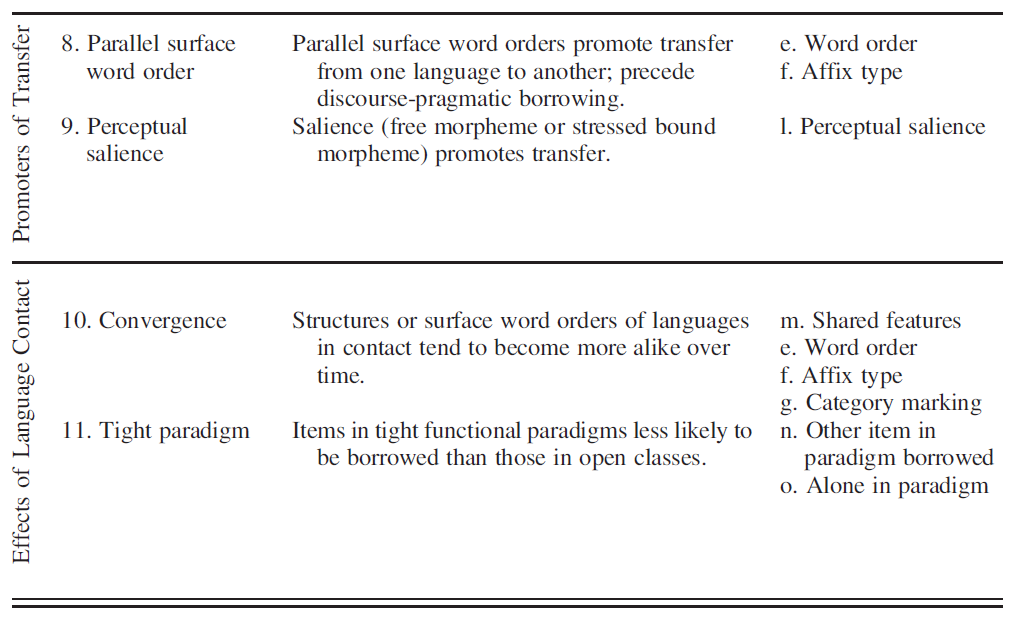
Three borrowing universals
Methodology
- Coded each foreign form in Table 2 as “not borrowed”, “borrowed”(used productively)
- Ran data from the two islands separately
- Each of the 191 forms in Table 2 was coded as borrowed or not once (i.e., as types) per
period, for a total of 1719 tokens from 9 periods
(191 * 9 = 1719) - The data were analyzed with the
Goldvarb 2001 statistical program
Productive means occurring at least three times in one text or one or more times per text in at least three texts during a given period.
Results

Once a foreign form becomes productive, it remains productive.
Results


Results
Two nonlinguistic factors were excluded:
- Time period 1 (1775–1837): reflects precontact Papiamentu when borrowings were not expected.
- CEC: The lack of borrowings from CEC→ prestige
Contributions of the principle of accountability
The statistically significant factors support the following proposed constraints on borrowing:
- morphological renewal,
- perceptual salience,
- convergence,
- other paradigm-member borrowed, and
- length of bilingualism.
Types of linguistic factors proposed
Of the three borrowing universals proposed, none were significant as proposed in the literature.
Allomorphy <-> isomorphic <-> complexity <-> convewrgence
- Shared features in languages in contact are likely to be transmitted to another
- Items in a tight paradigm → difficult to borrow
when they are borrowed, they are borrowed together
Prevalence of linguistic factors
- Social factors: no strong evidence
- Length of bilingualism: only significant external factor, but this finding is indirect.
Againsts Thomason and Kaufman’s view of the deterministic role of social factors
Relationship of form and function
The morphological encoding of structure was borrowed separately from the abstract structure it represents.
Discussion and conclusions
Conclusions
- Specific linguistic circumstances, with one relevant social factor
- Structural factors play a deterministic role in borrowing
- Once a borrowing becomes a productive part of the grammar of the recipient language, it may become sensitive to social status, but will vary only inasmuch as linguistic factors permit variation.
Accountability in morphological borrowing: Analyzing a linguistic subsystem as a sociolinguistic variable.
By lzong
Accountability in morphological borrowing: Analyzing a linguistic subsystem as a sociolinguistic variable.
PofA: Analysts should record all occurrences of a variable rather than selecting those variants of a variable that tends to confirm their argument while ignoring others that do not.
- 521



